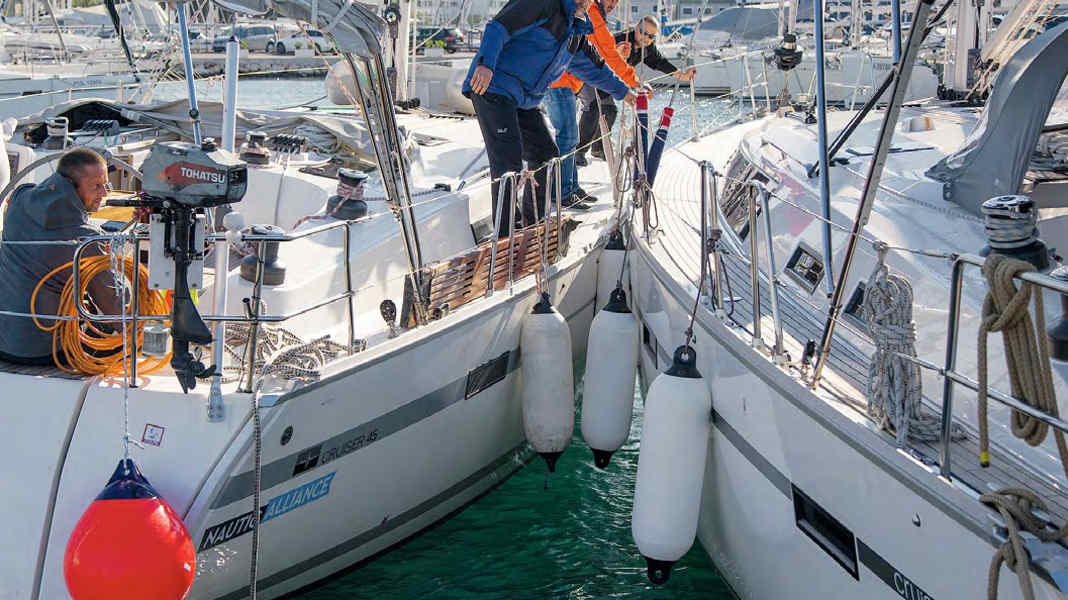Law: When is someone liable for damage?

Owner Schoppmann steers his motorsailer to a free berth. He has a strong wind from the port side. To get into the centre of the box, Schoppmann gives slight forward thrust. When he is still less than half a boat length away from the jetty, he sets the throttle to reverse in order to stop hard. But the gearbox does not react, the boat moves further ahead and the strong wind pushes the bow against the neighbouring berth. Considerable damage is caused to the side of the neighbouring vessel. The repair costs amount to almost 4,000 euros. At first glance, a clear-cut case. Owner Schoppmann is responsible. However, when examining the causes of the unsuccessful manoeuvre, it turns out that the Bowden cable of the throttle lever, which also controls the gearbox, has jumped out of its anchorage. As a result, owner Schoppmann was unable to engage reverse gear and stop his motorised glider. Is he still liable for the damage?
What a lawyer says
At first glance, it would appear so. It would only be different if Schoppmann could prove in court that it was an atypical causal event and that he could not be accused of a breach of duty of care, even negligently, either as owner or skipper.
That is a very high hurdle. After all, almost every case of damage to third-party property involves some kind of breach of duty of care.
However, apart from the few exceptions of so-called strict liability, there is no claim for damages under German law without fault on the part of the person responsible. And as a rule, the injured party must prove this. In the case of the owner Schoppmann, however, this burden of proof is exceptionally reversed, because in such a case it can be assumed on the basis of all life experience that Schoppmann made a mistake when mooring or that there was a technical defect that was due to carelessly neglected maintenance or inspection.
The skipper cannot be accused of a breach of duty
As the skipper, Schoppmann cannot actually be accused of a breach of duty. He wanted to stop, which would have been the right thing to do in the specific situation. However, the gearbox no longer responded due to the Bowden cable jumping out of its anchorage.
The decisive factor for his culpability is therefore whether Eigner Schoppmann could have prevented the Bowden cable from jumping out of its anchorage by regular maintenance or inspection.
In the present case, however, a well-founded court expert opinion has shown that there is generally no maintenance obligation for Bowden cables on sailing yachts due to their design. Depending on the size of the motor yacht, this may be different due to better accessibility.
The Rendsburg Local Court then also found (Rendsburg Local Court - 43 C 25/19 of 10 March 2023) that owner Schoppmann was not at fault and was therefore ultimately not liable for the damage incurred.
Recommendation: Yacht hull insurance
The decision may be surprising, but it is legally consistent. For the injured party, the result is the realisation that not every damage caused by another skipper leads to liability claims. It is therefore strongly recommended that you take out yacht hull insurance for possible damage to your own boat.
This was also the case in another recent case at the Higher Regional Court of Hamburg (6 U 40/22 BSch of 23 February 2023): A harbour operator on the Müritz was obliged by official regulations to regularly clean the ground at the berths. He did not fulfil this obligation, a sailor got his propeller caught in an old rope and considerable damage was caused. In the appeal proceedings, the Higher Regional Court in Hamburg denied a claim for damages on the grounds that there was a lack of proof of causality of the breach of duty by the harbour operator. This was because no one could expect the bottom to be cleaned every day. Cleaning at the beginning and end of the sailing season was appropriate. Since rubbish can also settle on the bottom between these cleanings and nobody knows when the rope was actually deposited there, the damage could also have occurred if the harbour operator had acted in accordance with its duties. The injured party went away empty-handed.


